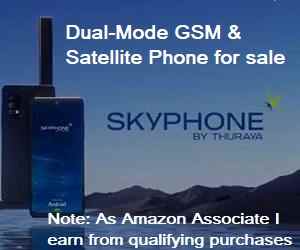Satellite Internet Forum.
Welcome, Guest. Forum rules.To search this site click here > SATSIG search
| Home Login Register |
| Satellite Internet forum › Dish pointing and alignment › iDirect 3000 and 1.2m hughes |
|
Pages: 1
|
iDirect 3000 and 1.2m hughes(Read 12670 times) |
|
Ex Member
Ex Member
|
Aug 23rd, 2008 at 9:47am
|
| Back to top |
« Last Edit: Aug 23rd, 2008 at 11:25am by Admin1 »
IP Logged
|
|
Eric Johnston
Senior Member
★★★ Offline Posts: 2109 |
Reply #1 - Aug 23rd, 2008 at 11:12am
|
| Back to top |
IP Logged
|
|
Ex Member
Ex Member
|
Reply #2 - Aug 23rd, 2008 at 2:56pm
|
| Back to top |
IP Logged
|
|
Eric Johnston
Senior Member
★★★ Offline Posts: 2109 |
Reply #3 - Aug 23rd, 2008 at 3:36pm
|
| Back to top |
IP Logged
|
|
Ex Member
Ex Member
|
Reply #4 - Aug 24th, 2008 at 11:36am
|
| Back to top |
IP Logged
|
|
Eric Johnston
Senior Member
★★★ Offline Posts: 2109 |
Reply #5 - Aug 24th, 2008 at 2:31pm
|
| Back to top |
IP Logged
|
|
Ex Member
Ex Member
|
Reply #6 - Aug 24th, 2008 at 3:18pm
|
| Back to top |
IP Logged
|
|
Eric Johnston
Senior Member
★★★ Offline Posts: 2109 |
Reply #7 - Aug 24th, 2008 at 3:29pm
|
| Back to top |
IP Logged
|
|
Ex Member
Ex Member
|
Reply #8 - Aug 26th, 2008 at 3:14pm
|
| Back to top |
IP Logged
|
|
Oasis Networks
Senior Member
★★★ Offline Posts: 232 |
Reply #9 - Aug 26th, 2008 at 5:31pm
|
| Back to top |
www.oasisnetworks.net - Oasis Networks - Online with you!
IP Logged
|
|
Eric Johnston
Senior Member
★★★ Offline Posts: 2109 |
Reply #10 - Aug 26th, 2008 at 5:56pm
|
| Back to top |
IP Logged
|
|
Ex Member
Ex Member
|
Reply #11 - Aug 27th, 2008 at 3:14pm
|
| Back to top |
IP Logged
|
|
Eric Johnston
Senior Member
★★★ Offline Posts: 2109 |
Reply #12 - Aug 27th, 2008 at 4:01pm
|
| Back to top |
IP Logged
|
|
Ex Member
Ex Member
|
Reply #13 - Aug 28th, 2008 at 7:49am
|
| Back to top |
IP Logged
|
|
Eric Johnston
Senior Member
★★★ Offline Posts: 2109 |
Reply #14 - Aug 28th, 2008 at 8:26am
|
| Back to top |
IP Logged
|
|
Ex Member
Ex Member
|
Reply #15 - Sep 6th, 2008 at 6:59pm
|
| Back to top |
IP Logged
|
|
Ex Member
Ex Member
|
Reply #16 - Sep 11th, 2008 at 1:22pm
|
| Back to top |
IP Logged
|
|
Eric Johnston
Senior Member
★★★ Offline Posts: 2109 |
Reply #17 - Sep 11th, 2008 at 2:30pm
|
| Back to top |
« Last Edit: Sep 11th, 2008 at 5:25pm by Eric Johnston »
IP Logged
|
|
Ex Member
Ex Member
|
Reply #18 - Sep 11th, 2008 at 10:10pm
|
| Back to top |
IP Logged
|
|
Eric Johnston
Senior Member
★★★ Offline Posts: 2109 |
Reply #19 - Sep 11th, 2008 at 10:20pm
|
| Back to top |
IP Logged
|
|
Pages: 1
|
Email me: eric@satsig.net
Powered by YaBB 2.5.2!
YaBB Forum Software © 2000-. All Rights Reserved.
Disclaimer, Terms of Use and Privacy Forum User Agreement Forum rules Cookie policy.



